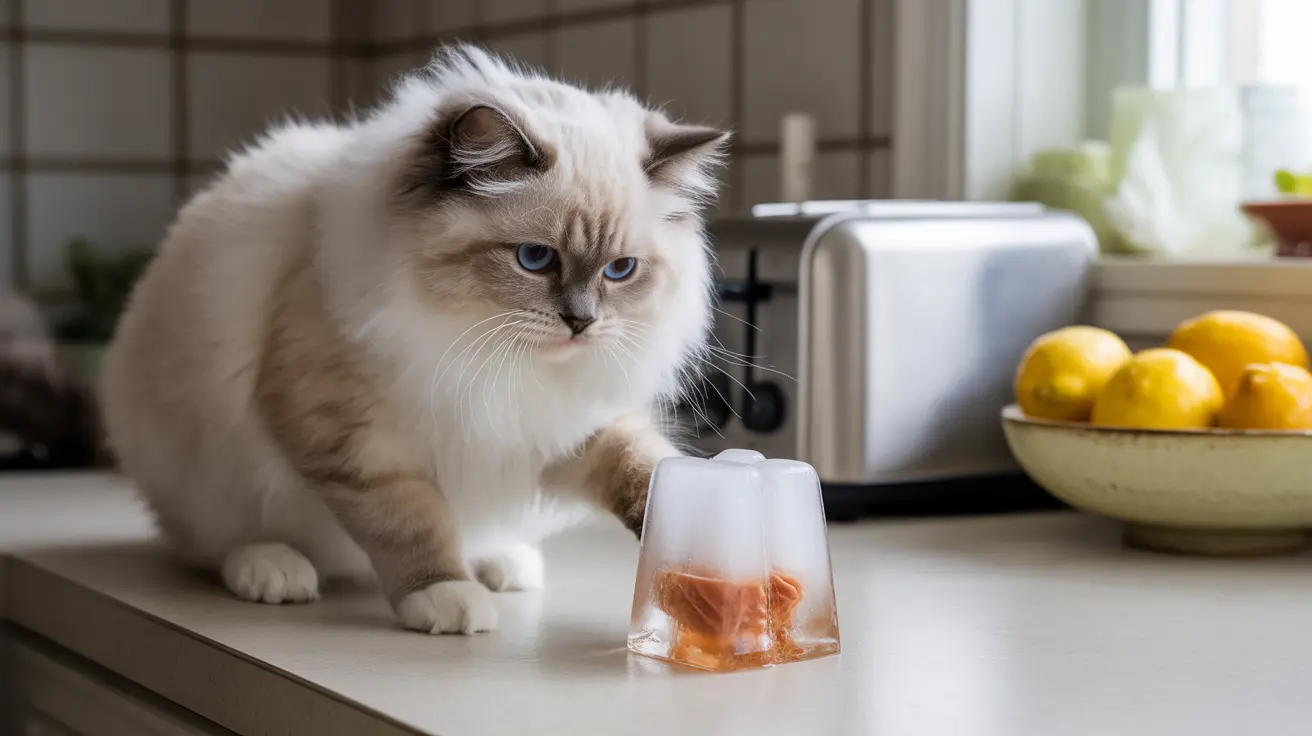As temperatures rise, you might wonder if sharing your frozen treats with your feline friend is safe. While cats may show curiosity about popsicles, these human treats can pose significant health risks to our furry companions. Let's explore the facts about cats and popsicles, including what's safe, what's dangerous, and how to create cat-friendly frozen alternatives.
Understanding the relationship between cats and frozen treats requires considering both their unique physiology and dietary needs. Unlike humans, cats have specific nutritional requirements and limitations that make most commercial popsicles unsuitable for their consumption.
Why Commercial Popsicles Are Dangerous for Cats
Store-bought popsicles contain several ingredients that can be harmful to cats. The primary concerns include:
- High sugar content that cats can't properly metabolize
- Artificial sweeteners, especially xylitol, which can be toxic
- Dairy products that many cats are intolerant to
- Artificial colors and flavors that may cause digestive issues
- Potentially toxic flavors like grape or chocolate
Even sugar-free varieties pose risks, as artificial sweeteners can cause severe reactions in cats. The popsicle stick itself presents a choking hazard or risk of oral injury if chewed.
Understanding Your Cat's Relationship with Sweet Treats
Cats are unique among mammals in that they lack sweet taste receptors. This evolutionary trait means they have no natural desire for sugary foods like popsicles. Their indifference to sweetness is actually a protective mechanism that helps them avoid potentially harmful foods in the wild.
Safe Alternatives: Homemade Frozen Treats for Cats
If you want to offer your cat a cooling treat, consider these cat-safe frozen alternatives:
Healthy Base Ingredients
- Low-sodium chicken or beef broth
- Tuna water
- Plain, unseasoned meat puree
- Small amounts of plain Greek yogurt (if tolerated)
Simple Recipe Ideas
- Freeze plain chicken broth in ice cube trays
- Create frozen treats from wet cat food mixed with water
- Make tuna water ice cubes with small pieces of tuna
Monitoring and Safety Guidelines
When introducing any frozen treats to your cat's diet, remember these important points:
- Limit treats to 10% of daily caloric intake
- Supervise your cat while eating frozen treats
- Remove melted portions after 20 minutes
- Monitor for any adverse reactions
- Introduce new treats gradually
Health Benefits of Cat-Safe Frozen Treats
When prepared properly, frozen treats can offer several benefits:
- Enhanced hydration, especially during hot weather
- Mental stimulation and enrichment
- Bonding opportunities between cat and owner
- Cooling relief during summer months
Frequently Asked Questions
Can cats safely eat human popsicles or are they harmful?
No, human popsicles are not safe for cats. They contain ingredients like sugar, artificial sweeteners, and additives that can cause digestive issues or be toxic to cats.
What ingredients should I avoid in popsicles for my cat?
Avoid sugar, artificial sweeteners (especially xylitol), chocolate, grapes, dairy products, artificial colors and flavors, and any ingredients containing onion or garlic.
How can I make homemade cat popsicles that are safe and healthy?
Use cat-safe ingredients like low-sodium broth, tuna water, or pureed plain meat. Freeze in small portions using ice cube trays, and always supervise during treat time.
Why don't cats like sweet flavors in treats like popsicles?
Cats lack sweet taste receptors and cannot taste sweetness, making sugary treats like popsicles unappetizing to them naturally.
Are there any health benefits to giving my cat homemade frozen treats?
Yes, proper homemade frozen treats can help with hydration, provide enrichment, and offer cooling relief during hot weather when made with cat-safe ingredients.
Conclusion
While commercial popsicles are not safe for cats, you can still provide your feline friend with enjoyable frozen treats by making them at home using cat-appropriate ingredients. Remember to always prioritize your cat's safety by avoiding harmful ingredients and monitoring their reaction to new treats. When in doubt, consult with your veterinarian before introducing any new foods into your cat's diet.






